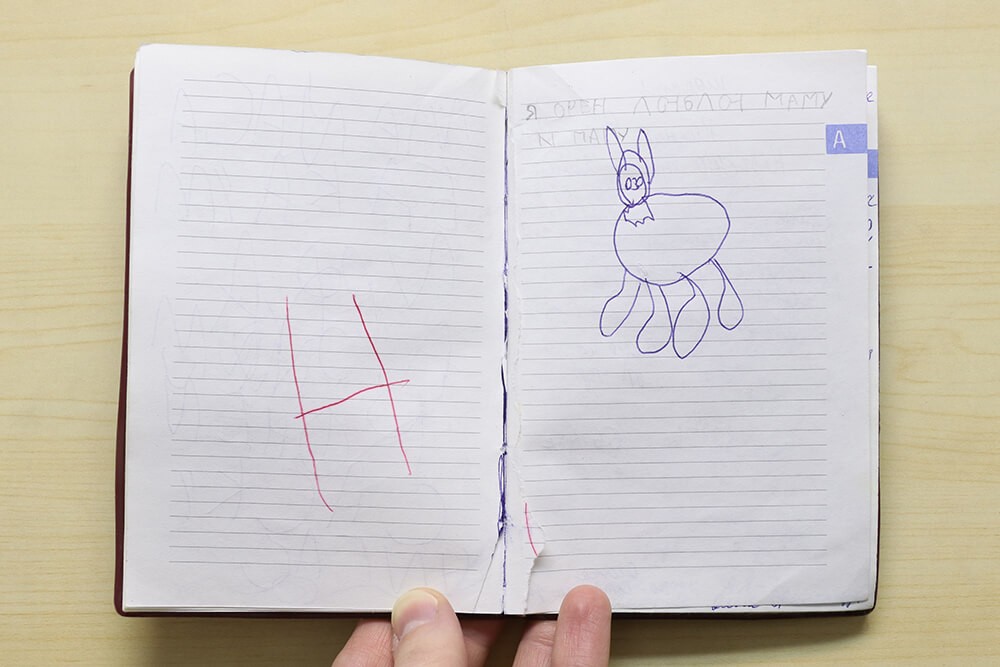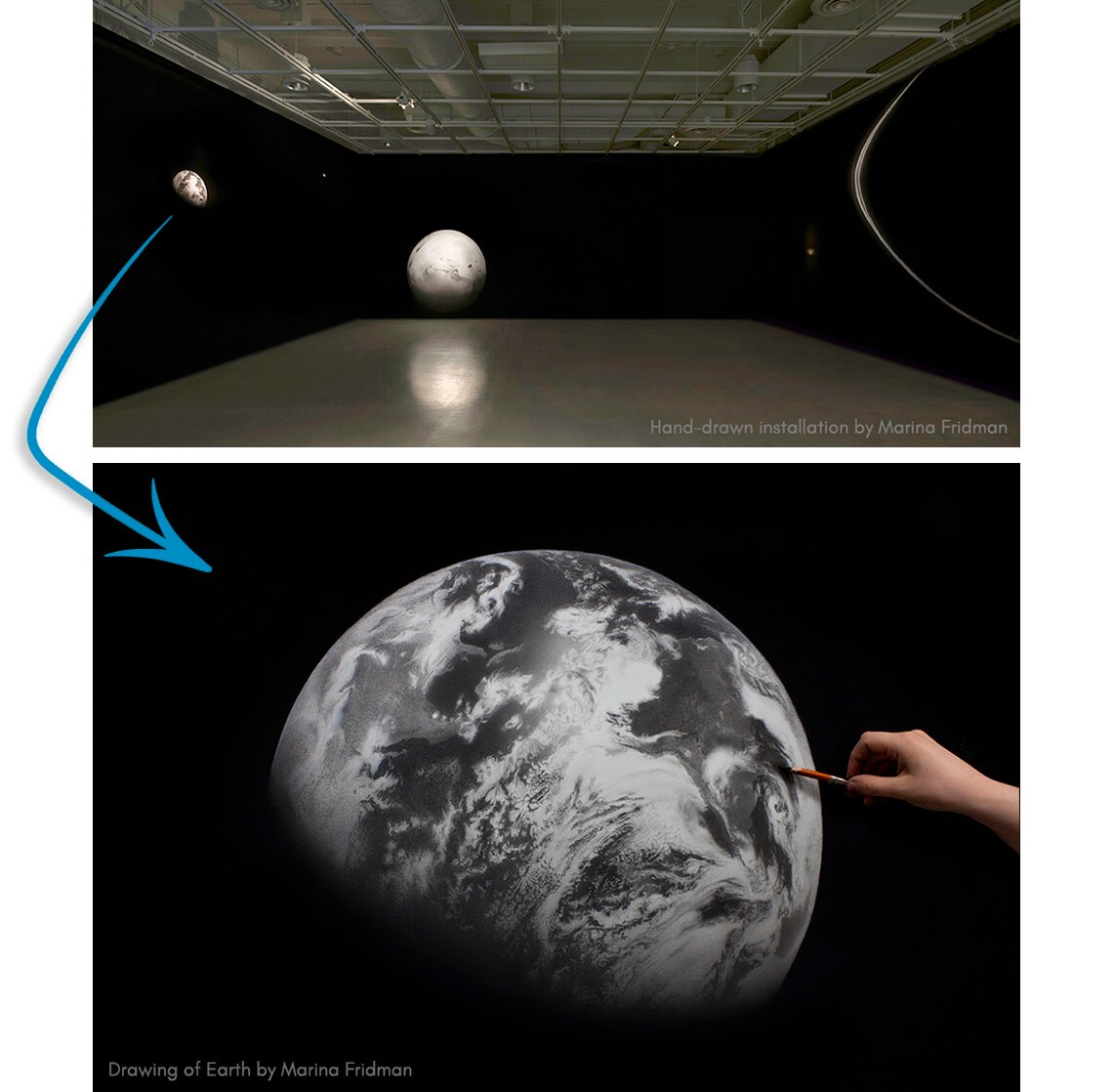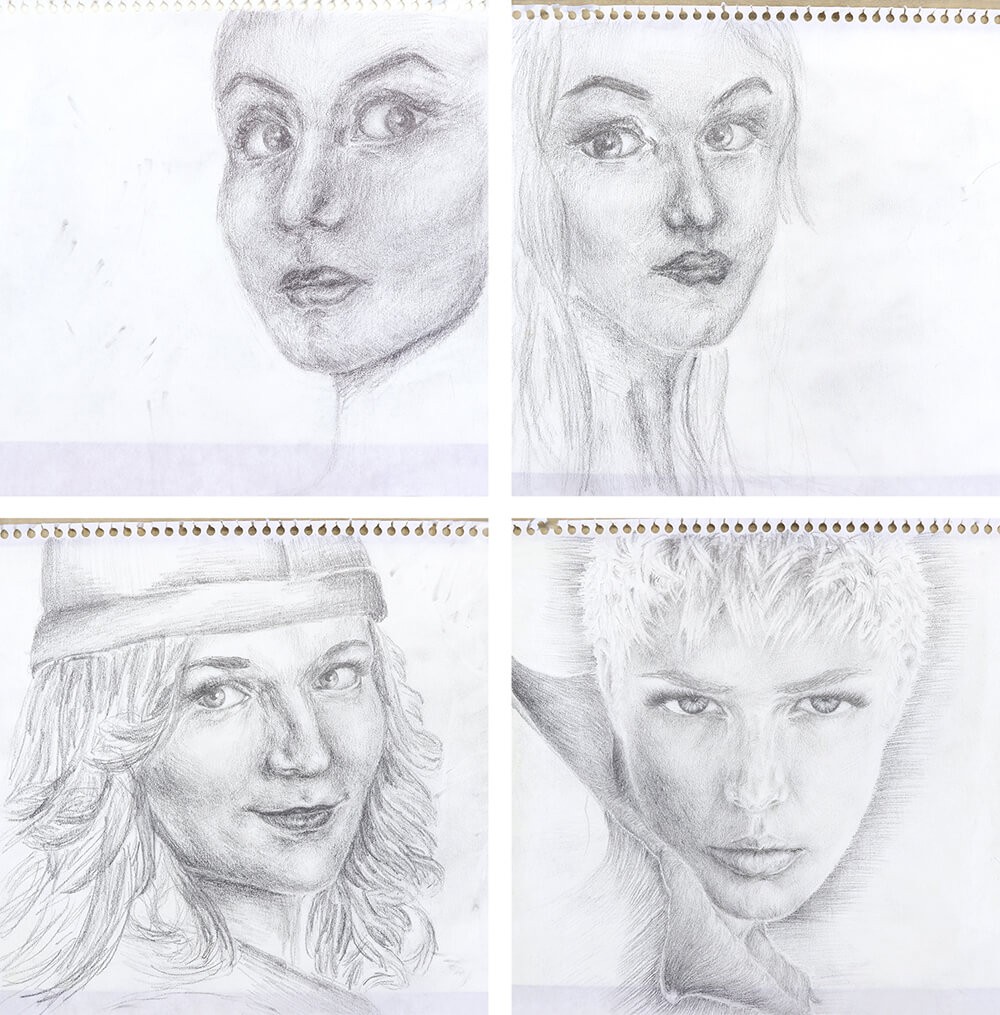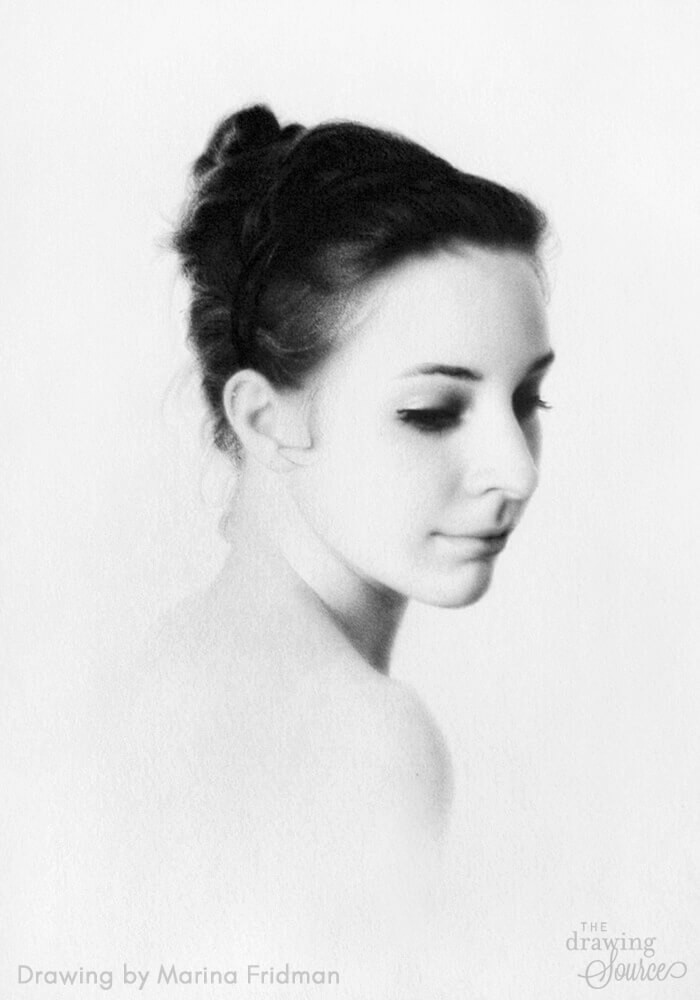Can you learn to draw? Absolutely! Discover how anyone can develop drawing skills with the right guidance and consistent practice. This article explores the journey of learning to draw, debunking myths and offering practical steps for improvement. Learn how to unlock your artistic potential and create realistic drawings.
Are you wondering if learning to draw is truly possible? At LEARNS.EDU.VN, we firmly believe that anyone can develop their drawing abilities with the right instruction and dedicated practice. We’re here to provide you with the resources and guidance needed to embark on your artistic journey, helping you cultivate your skills and achieve your creative goals. Uncover your hidden talents and explore the possibilities of artistic expression with our comprehensive drawing resources, designed to unleash your creativity and help you master artistic techniques.
1. Debunking the Myth of Innate Talent
The common misconception that drawing is solely reserved for those born with inherent artistic talent is simply not true. Realistic drawing is a skill that can be learned and honed by anyone, regardless of their perceived natural abilities. With proper instruction, dedicated practice, and the right resources, anyone can dramatically improve their drawing skills. This is a message worth repeating – artistic talent is not a prerequisite for learning to draw.
Many successful artists weren’t born with exceptional talent; they developed their skills through consistent effort and quality education. Consider the story of Leonardo da Vinci, often celebrated as a master of art and science. While he undoubtedly had a keen eye and a natural aptitude for observation, his skills were meticulously developed through years of study, practice, and experimentation. Da Vinci’s notebooks are filled with countless sketches, anatomical studies, and engineering designs, demonstrating his commitment to mastering various disciplines through persistent learning and refinement.
1.1 The Role of Practice
Practice is the cornerstone of skill development. Regular, consistent practice allows you to internalize techniques, develop muscle memory, and refine your observational abilities. It’s not about being perfect from the start; it’s about consistently putting in the effort to improve over time. As Malcolm Gladwell discusses in his book “Outliers,” achieving mastery in any field requires approximately 10,000 hours of deliberate practice. While this number is a guideline, the principle remains the same: consistent effort leads to significant improvement.
1.2 The Importance of Proper Instruction
While practice is crucial, it’s most effective when combined with proper instruction. A skilled teacher or mentor can provide guidance on fundamental techniques, offer constructive criticism, and help you identify areas for improvement. Proper instruction can also prevent you from developing bad habits that could hinder your progress in the long run. TheDrawingSource.com offers valuable resources and tutorials that serve as excellent starting points for aspiring artists.
2. Meet the Expert: Marina Fridman
Marina Fridman, a visual artist, arts educator, and the creative force behind TheDrawingSource.com and the Drawing Decoded Membership, is passionate about making quality drawing education accessible to everyone. Marina is dedicated to demystifying realistic drawing and empowering individuals to unlock their artistic potential.
2.1 Marina’s Journey
Marina’s personal journey is a testament to the fact that drawing skills can be learned. She wasn’t born with exceptional drawing abilities, but through dedication, education, and consistent practice, she transformed herself into a skilled artist. Her success story serves as an inspiration to aspiring artists, demonstrating that anyone can achieve their artistic goals with the right mindset and approach.
2.2 The Drawing Decoded Membership
The Drawing Decoded Membership, created by Marina Fridman, is designed to provide aspiring artists with a comprehensive and structured learning experience. This program offers in-depth tutorials, personalized feedback, and a supportive community, making it an ideal resource for anyone looking to improve their drawing skills. Through this membership, learners gain access to essential drawing concepts, techniques, and exercises that accelerate their progress and foster artistic growth.
2.3 Transforming Spaces Through Art
Marina’s creative practice involves creating drawing installations – large-scale drawings that transform spaces. These installations, often created with charcoal pencils and compressed charcoal sticks, invite viewers to immerse themselves in unique and captivating environments. Her work exemplifies the power of drawing to create immersive experiences and evoke emotional responses.
3. The Early Days: A Humble Beginning
Marina’s early childhood drawings were far from exceptional. Like many children, her initial attempts at drawing were simple and unsophisticated. However, these early experiences laid the foundation for her future artistic endeavors.
3.1 The Duck in the Mirror
One memorable drawing from Marina’s childhood featured a duck with long, flowing hair looking at herself in the mirror. The caption read, “Brush your teeth, they’re yellow.” While this drawing may not have showcased remarkable artistic talent, it demonstrated her creativity and ability to communicate through art.
3.2 Consistent Effort, Gradual Improvement
Throughout her childhood, Marina enrolled in casual art classes. Although she considered quitting multiple times, her father’s encouragement kept her engaged. Over time, the accumulation of lessons and practice led to gradual improvement in her drawing skills.
3.3 Typical Beginner Choices
Despite making progress, Marina’s early drawings reflected typical choices made by beginners, which detracted from the believability and realism of the images. These choices included a lack of attention to proportion, perspective, and shading techniques.
4. The Three Pillars of Drawing Fluency
To become fluent in the visual language of drawing, it’s essential to focus on three key areas: learning to “see,” obtaining essential drawing knowledge, and acquiring the drawing skills to translate what you see onto paper.
4.1 Learning to “See”
Learning to “see” involves developing your observational skills and training your eye to perceive the world accurately. This includes understanding how light and shadow interact, recognizing shapes and forms, and perceiving spatial relationships. As Betty Edwards explains in her book “Drawing on the Right Side of the Brain,” shifting from verbal, analytical thinking to visual, perceptual thinking is crucial for improving drawing skills.
4.2 Obtaining Essential Drawing Knowledge
Essential drawing knowledge encompasses understanding fundamental concepts and techniques, such as perspective, anatomy, composition, and color theory. These concepts provide a framework for creating realistic and compelling drawings. Online resources like Khan Academy and Coursera offer excellent courses on these topics.
4.3 Acquiring Drawing Skills
Acquiring drawing skills involves mastering the technical aspects of drawing, such as line control, shading, and rendering. This requires consistent practice and experimentation with different tools and techniques. Resources like The Virtual Instructor provide step-by-step tutorials and demonstrations to help you develop these skills.
5. A Turning Point: Formal Art Education
A pivotal moment in Marina’s artistic journey occurred when she decided to pursue formal art education. Encouraged by her mother, she researched art programs and eventually moved from Canada to the United States to begin her studies.
5.1 The Impact of Knowledge and Skill
Once Marina began gaining drawing knowledge, technical skill, and the ability to “see,” combined with consistent practice, her artistic abilities flourished. This transformation demonstrated the power of education and dedication in unlocking artistic potential.
5.2 Unlocking Natural Ability
While Marina may have possessed some natural artistic ability, it was only through proper instruction and practice that this ability was unlocked. This highlights the importance of nurturing and developing innate talents through education and hard work.
6. How to Learn to Draw: A Step-by-Step Guide
Learning to draw requires a structured approach that encompasses knowledge, technique, and consistent practice. Here’s a step-by-step guide to help you embark on your drawing journey.
6.1 Know What to Learn and in What Order
One of the biggest challenges for beginners is knowing what to learn and in what order. It’s essential to start with foundational skills and gradually progress to more advanced techniques. Trying to grasp advanced concepts before mastering the basics can be frustrating and counterproductive.
Curriculum Table
| Level | Focus | Key Skills | Resources |
|---|---|---|---|
| Beginner | Foundational Skills | Line control, basic shapes, proportion, perspective | Drawing Basics by The Drawing Source, Keys to Drawing by Bert Dodson |
| Intermediate | Shading and Rendering | Light and shadow, value, texture, form | Light and Shade by M. Halevi, Rendering in Pen and Ink by Arthur L. Guptill |
| Advanced | Anatomy and Composition | Figure drawing, portraiture, dynamic composition, storytelling | Figure Drawing: For All It’s Worth by Andrew Loomis, Composition by Arthur Wesley Dow, Dynamic Anatomy by Burne Hogarth |




6.2 Be Taught Essential Drawing Concepts and Techniques
Learning essential drawing concepts and techniques is crucial for developing a strong foundation. This includes understanding how to measure, shade smoothly, and view your subject at different stages of the drawing process.
Technique and Concept Guide
| Technique/Concept | Description | Application |
|---|---|---|
| Measuring | Using techniques to accurately determine proportions and spatial relationships. | Ensuring accurate representation of subjects, especially in portraiture and figure drawing. |
| Smooth Shading | Creating smooth transitions between values to create the illusion of form and light. | Adding depth and realism to drawings, enhancing the overall visual impact. |
| Perspective | Representing three-dimensional space on a two-dimensional surface. | Creating believable and immersive scenes, adding depth and dimension to compositions. |
6.3 Be Shown Effective Exercises to Practice
Practicing efficiently is key to gaining proficiency and comfort with drawing tools and techniques. There are more and less effective ways to practice the skills needed to create a realistic drawing.
Effective Exercise Examples
| Exercise | Description | Skill Developed | Frequency |
|---|---|---|---|
| Contour Drawing | Drawing the outline of a subject without lifting your pen, focusing on observation and hand-eye coordination. | Observational skills, hand-eye coordination, understanding form. | Daily |
| Value Scales | Creating a range of values from light to dark to understand light and shadow. | Understanding value, shading techniques, creating depth. | Every other day |
| Gesture Drawing | Capturing the essence of a subject’s movement or pose quickly and loosely. | Understanding anatomy, capturing movement, improving composition. | Daily |
6.4 Practice Regularly and Consistently
Consistent practice is essential for learning any new skill. However, the process and visible progress can be extremely enjoyable and fulfilling.
Benefits of Consistent Practice
| Benefit | Description |
|---|---|
| Skill Reinforcement | Regular practice reinforces learned techniques and concepts, making them more ingrained and easier to recall. |
| Muscle Memory Development | Consistent practice develops muscle memory, allowing you to execute techniques more smoothly and intuitively. |
| Confidence Building | As you see improvement in your drawings, your confidence will grow, motivating you to continue practicing and pushing your artistic boundaries. |
7. The Role of Qualified Instruction
While self-teaching is possible, qualified instruction or mentorship can significantly accelerate your learning process. A skilled instructor can provide personalized guidance, identify areas for improvement, and offer valuable insights that you may not discover on your own.
7.1 The Drawing Decoded Membership: Your Learning Accelerator
The Drawing Decoded membership takes care of the first three points mentioned above, providing you with a structured curriculum, essential concepts and techniques, and effective exercises to practice. All you need to do is enjoy learning new skills and concepts while practicing consistently.
7.2 Building Foundational Skills
If you’re looking to build the foundational skills, techniques, and knowledge to confidently face advanced drawing subjects like the figure and portrait, the Drawing Decoded membership is an excellent resource. It takes the guesswork out of what to do or practice next, allowing you to focus on the lessons and your improvement.
8. Conclusion: Unleash Your Artistic Potential
So, can you learn to draw? Absolutely! Realistic drawing is a learnable skill, and everyone can drastically improve their drawing skills with proper instruction and practice. Embrace the journey, dedicate yourself to consistent effort, and unlock your artistic potential.
Embark on your artistic journey with LEARNS.EDU.VN. We offer a variety of resources and courses designed to help you develop your drawing skills. Whether you’re a beginner or an experienced artist, our comprehensive programs will provide you with the knowledge and techniques you need to succeed. Visit LEARNS.EDU.VN today and start your path to artistic mastery. Contact us at 123 Education Way, Learnville, CA 90210, United States or Whatsapp: +1 555-555-1212. Let’s take the guesswork out of what to do or practice next, so that you can focus on the lessons and on your improvement.
At LEARNS.EDU.VN, we address key challenges faced by aspiring artists:
- Difficulty in Finding Quality Learning Resources: We offer structured courses and tutorials developed by experienced artists, ensuring you receive reliable and effective instruction.
- Lack of Motivation and Direction: Our programs provide clear learning paths and personalized feedback, helping you stay motivated and focused on your goals.
- Struggling with Complex Concepts: We break down complex drawing concepts into simple, easy-to-understand lessons, making learning accessible to everyone.
9. Frequently Asked Questions (FAQ)
Here are some frequently asked questions about learning to draw:
- Is it possible to learn to draw if I have no natural talent?
- Yes, drawing is a skill that can be learned through practice and instruction, regardless of natural talent.
- How long does it take to learn to draw well?
- The time it takes to learn to draw well varies depending on individual effort and dedication, but consistent practice will lead to improvement over time.
- What are the essential tools for learning to draw?
- Essential tools include pencils, erasers, drawing paper, and a sketchbook.
- Can online drawing courses be effective?
- Yes, online drawing courses can be highly effective, providing structured lessons, personalized feedback, and a supportive community.
- How important is it to practice regularly?
- Regular practice is crucial for developing and maintaining drawing skills.
- What are some common mistakes beginners make?
- Common mistakes include not paying attention to proportion, perspective, and shading.
- How can I stay motivated while learning to draw?
- Set realistic goals, track your progress, and find a supportive community to stay motivated.
- Are there any shortcuts to learning to draw?
- The only “shortcut” is qualified instruction or mentorship.
- What are the benefits of learning to draw?
- Learning to draw can improve observational skills, creativity, and self-expression.
- Where can I find quality drawing education?
- LEARNS.EDU.VN offers comprehensive drawing courses and resources for learners of all levels.
By following these guidelines and embracing the learning process, you can unlock your artistic potential and achieve your drawing goals.
10. Call to Action
Ready to unleash your inner artist? Visit learns.edu.vn today to explore our comprehensive drawing courses and unlock your artistic potential! Don’t wait—start your artistic journey now!